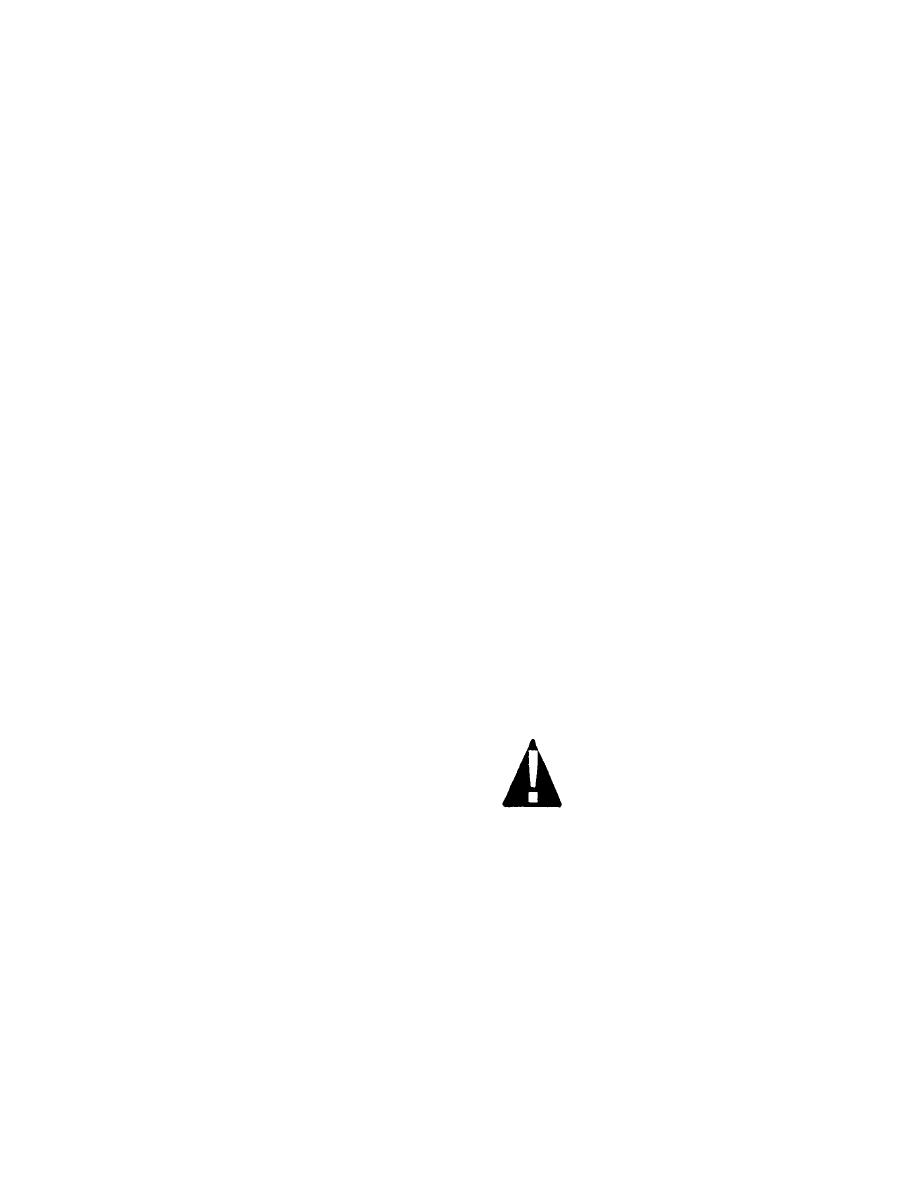
FLOW METER TEE TEST PROCEDURE IX
TM 5-3805-263-14&P-3
B. Check suction line for air leaks [put foam (like
PROBLEM:
The percent of flow loss for Test 25 is
shaving cream) on all connections. The foam
5% or MORE. Flow difference for
will be pulled into the line at any point of
Test 25 is 2 gpm or MORE than the
leakage].
flow difference for Test 27.
C. Remove the cover from the hydraulic tank and
inspect for oil leaks (check above the oil level
PROBABLE REASON:
first).
D. Disassemble the pump and check for correct
A. Oil aeration (low oil level, hydraulic oil that is not
assembly and damage to seals.
the correct type, air leak in the suction line for
the pump, oil leaks inside the tank such as
PROBLEM:
The flow difference between each of
failure of seals or loose connections).
the Tests 28 through 35 suddenly
B. Pump cavitation (restriction in the suction line for
becomes lower at one test and the
the pump, oil viscosity that is not correct).
flow rate is the same for the
remainder of the tests at higher
RECOMMENDATION FOR ACTION:
engine speed (rpm). Example: 4 gpm
difference between Tests 28 and 29,
Do Tests 28 through 35 to find if the reason is
29 and 30, 30 and 31 but 1 gpm
aeration or cavitation.
difference between Tests 31 and 32
and the flow rates for Tests 33, 34
Pump Test for Aeration and Cavitation
and 35 are approximately the same as
Test 40.
Test 28 through 35: Aeration and Cavitation Tests
These eight tests are similar. Do the tests as
PROBABLE REASON:
follows:
Pump cavitation (restriction in the suction line for
1. Turn the manual control valve to the OPEN
the pump).
position.
2. Start and run the engine at 600 rpm.
RECOMMENDATION FOR ACTION:
3. Slowly turn the manual control valve toward the
CLOSED position to get 1000 psi.
4. Make a record of the oil temperature and the
Inspect suction line and tank.
flow rate (gpm).
5. Run the engine at 800 rpm for Test 29 (Test 30:
BLOCKED COMPONENT TESTS (CHARTS D AND E)
1000 rpm, Test 31: 1200 rpm, etc.) while
keeping the adjustment of the manual control
If the System Tests and Pump Tests give an
valve at 1000 psi for each test.
indication of leakage in the control valves and/or
6. Make a record of the oil temperature and the
cylinders or motor that is not acceptable, do the Blocked
flow rate (gpm) for each test.
Component Tests. Blocking plugs can be put in each of
the circuit lines. For best accuracy, do these tests with
CAUTION
the oil temperature at approximately 150F.
Immediately after stopping the
engine, remove the Blocking Cap and
WARNING
Plug from the pressure line from the
Lower all implements to the
hydraulic pump to prevent any
ground and put the other
possible damage later.
implements
in
positions
where there is a minimum
Troubleshooting
load on either end of the
hydraulic cylinders for each
PROBLEM:
The percent of flow loss for Test 25 is
implement. The pressure in
5% or MORE. Flow difference for
the ends of a hydraulic
Test 25 is 2 gpm MORE than flow
cylinder, when the control
difference for Test 27.
Tests 28
lever is moved to HOLD
through 35 have approximately the
position, is kept in the ends of
same flow difference.
the cylinder by the lock check
valve. Slowly loosen the oil
PROBABLE REASON:
line fitting so that oil runs
around the threads of the
Oil aeration (low oil level, hydraulic oil that is not
fitting before the oil line is
the correct type, air leak in the suction line for the pump,
disconnected. The blocking
oil leaks inside the tank such as failure of seals, or loose
plugs that were put in the
connections).
lines for the tests must be
slowly loosened to let the oil
RECOMMENDATION FOR ACTION:
run around the threads before
the
blocking
plugs
are
A. Check oil level and type of hydraulic oil being
removed.
used.
3-69

